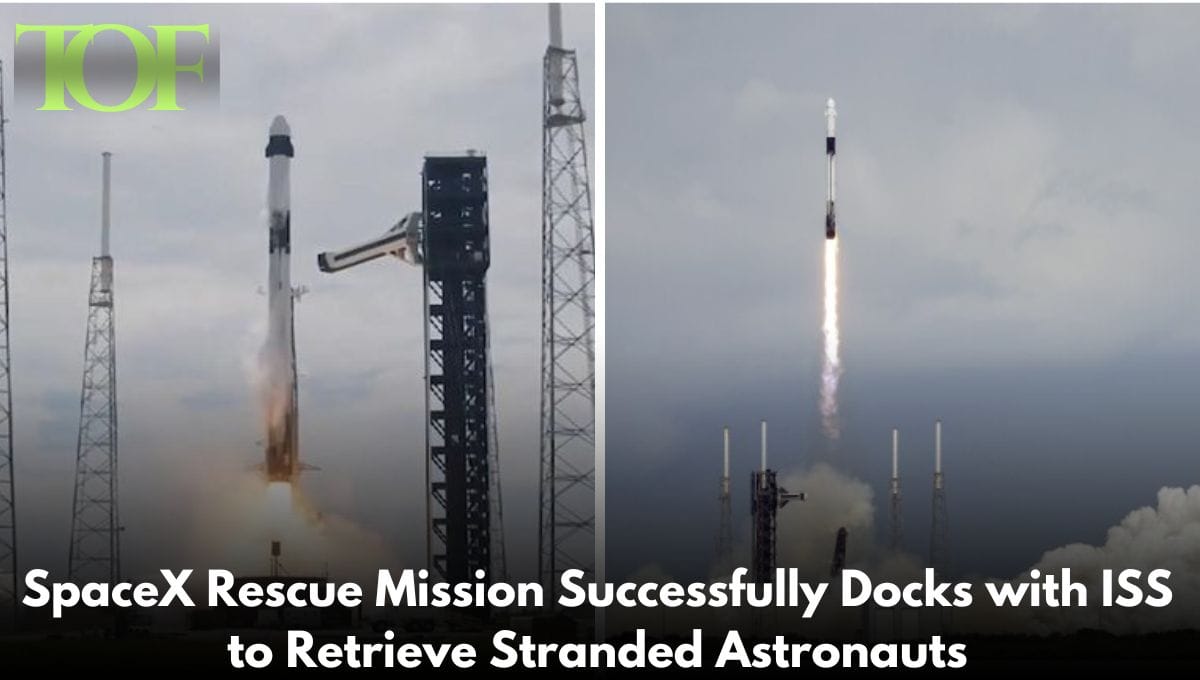The SpaceX Crew-9 successfully docked with the International Space Station (ISS) on Sunday, September 29, 2024, carrying aboard two astronauts: NASA’s Nick Hague and cosmonaut Alexander Gorbunov of Russia. The mission primarily aimed at bringing back two American astronauts, Butch Wilmore and Suni Williams, who had spent months at the ISS due to technical issues with their Boeing-designed Starliner spacecraft.
Liftoff was today from Cape Canaveral, Florida at 1:17 PM EDT (1717 GMT) aboard a Falcon 9 rocket. NASA originally had the launch set for mid-August but postponed it, citing its concerns about the propulsion system of the Starliner spacecraft. This had made Wilmore and Williams extend their time on the ISS, instead of originally scheduled for eight days. Their mission now clocks nearly eight months.
According to NASA, “We appreciate SpaceX’s flexibility and support in handling this unique mission,” said NASA Associate Administrator Jim Free. After weeks of rigorous testing on Starliner’s reliability, NASA decided to return its astronauts using SpaceX’s Dragon spacecraft to launch Crew-9.
The Dragon capsule of Crew-9 touched the ISS on Sunday at 5:30 PM, and Hague and Gorbunov boarded the orbiting station hours later to reunite with colleagues. “What a fabulous day it was today,” reported NASA Deputy Administrator Pam Melroy with excitement in a news conference.
During their mission at the ISS, the new crew members will stay there for nearly five months, carry out over 200 scientific experiments, and perform station maintenance. Meanwhile, Wilmore and Williams will be preparing to return to Earth by February 2025, the time when this mission will end but indeed has been a long and grueling one.
This mission marks yet another important stride for SpaceX in NASA’s continued space exploration missions. The company, founded by Elon Musk, flies regular crewed missions to the ISS, ensuring that astronauts are rotated through smoothly. Its sixth of six-monthly missions, Crew-9 is intended to further scientific research and support human presence in space.
Although Hurricane Helene, which recently hit Florida, delayed launching the Crew-9 crew a day, the successful docking of spacecraft Crew Dragon with the International Space Station marks a significant success in NASA and SpaceX’s collaboration.
As the mission unfolds, NASA keeps its eyes on the Starliner performance in hopes that it overcomes the challenges with the spacecraft for a crewed flight. Meanwhile, the safe return of Wilmore and Williams will conclude one of the longest astronaut stays aboard the ISS in recent times.
It underlined the importance of space innovation, but the real talent shown was in the ability of astronauts and a national space agency to rise from untold challenges that seemed and were unexpected.
To Read More: Technology

